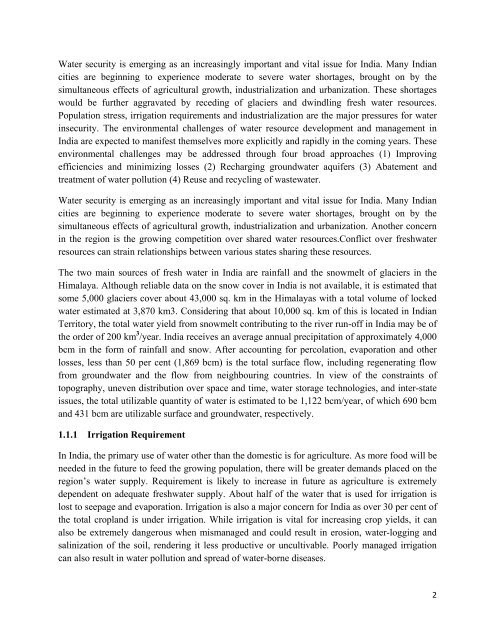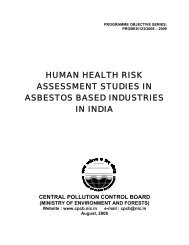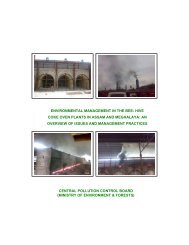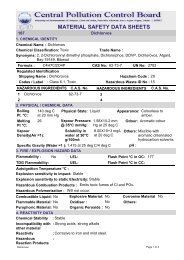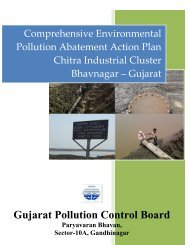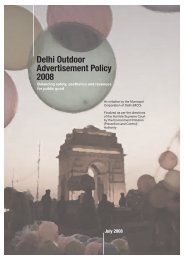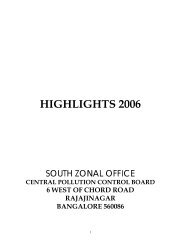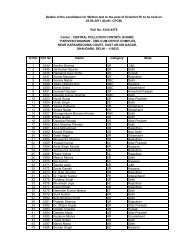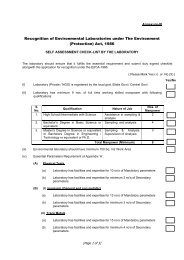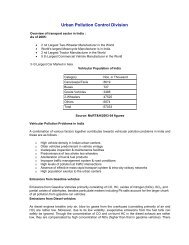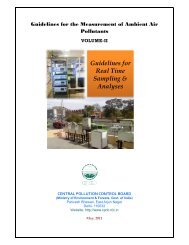Q ST QUA TAT ALIT US O TY IN OF W N IN WA NDIA ATER A- 2 R ...
Q ST QUA TAT ALIT US O TY IN OF W N IN WA NDIA ATER A- 2 R ...
Q ST QUA TAT ALIT US O TY IN OF W N IN WA NDIA ATER A- 2 R ...
You also want an ePaper? Increase the reach of your titles
YUMPU automatically turns print PDFs into web optimized ePapers that Google loves.
Water security is emerging as an increasingly important and vital issue for India. Many Indiancities are beginning to experience moderate to severe water shortages, brought on by thesimultaneous effects of agricultural growth, industrialization and urbanization. These shortageswould be further aggravated by receding of glaciers and dwindling fresh water resources.Population stress, irrigation requirements and industrialization are the major pressures for waterinsecurity. The environmental challenges of water resource development and management inIndia are expected to manifest themselves more explicitly and rapidly in the coming years. Theseenvironmental challenges may be addressed through four broad approaches (1) Improvingefficiencies and minimizing losses (2) Recharging groundwater aquifers (3) Abatement andtreatment of water pollution (4) Reuse and recycling of wastewater.Water security is emerging as an increasingly important and vital issue for India. Many Indiancities are beginning to experience moderate to severe water shortages, brought on by thesimultaneous effects of agricultural growth, industrialization and urbanization. Another concernin the region is the growing competition over shared water resources.Conflict over freshwaterresources can strain relationships between various states sharing these resources.The two main sources of fresh water in India are rainfall and the snowmelt of glaciers in theHimalaya. Although reliable data on the snow cover in India is not available, it is estimated thatsome 5,000 glaciers cover about 43,000 sq. km in the Himalayas with a total volume of lockedwater estimated at 3,870 km3. Considering that about 10,000 sq. km of this is located in IndianTerritory, the total water yield from snowmelt contributing to the river run-off in India may be ofthe order of 200 km 3 /year. India receives an average annual precipitation of approximately 4,000bcm in the form of rainfall and snow. After accounting for percolation, evaporation and otherlosses, less than 50 per cent (1,869 bcm) is the total surface flow, including regenerating flowfrom groundwater and the flow from neighbouring countries. In view of the constraints oftopography, uneven distribution over space and time, water storage technologies, and inter-stateissues, the total utilizable quantity of water is estimated to be 1,122 bcm/year, of which 690 bcmand 431 bcm are utilizable surface and groundwater, respectively.1.1.1 Irrigation RequirementIn India, the primary use of water other than the domestic is for agriculture. As more food will beneeded in the future to feed the growing population, there will be greater demands placed on theregion’s water supply. Requirement is likely to increase in future as agriculture is extremelydependent on adequate freshwater supply. About half of the water that is used for irrigation islost to seepage and evaporation. Irrigation is also a major concern for India as over 30 per cent ofthe total cropland is under irrigation. While irrigation is vital for increasing crop yields, it canalso be extremely dangerous when mismanaged and could result in erosion, water-logging andsalinization of the soil, rendering it less productive or uncultivable. Poorly managed irrigationcan also result in water pollution and spread of water-borne diseases.2


